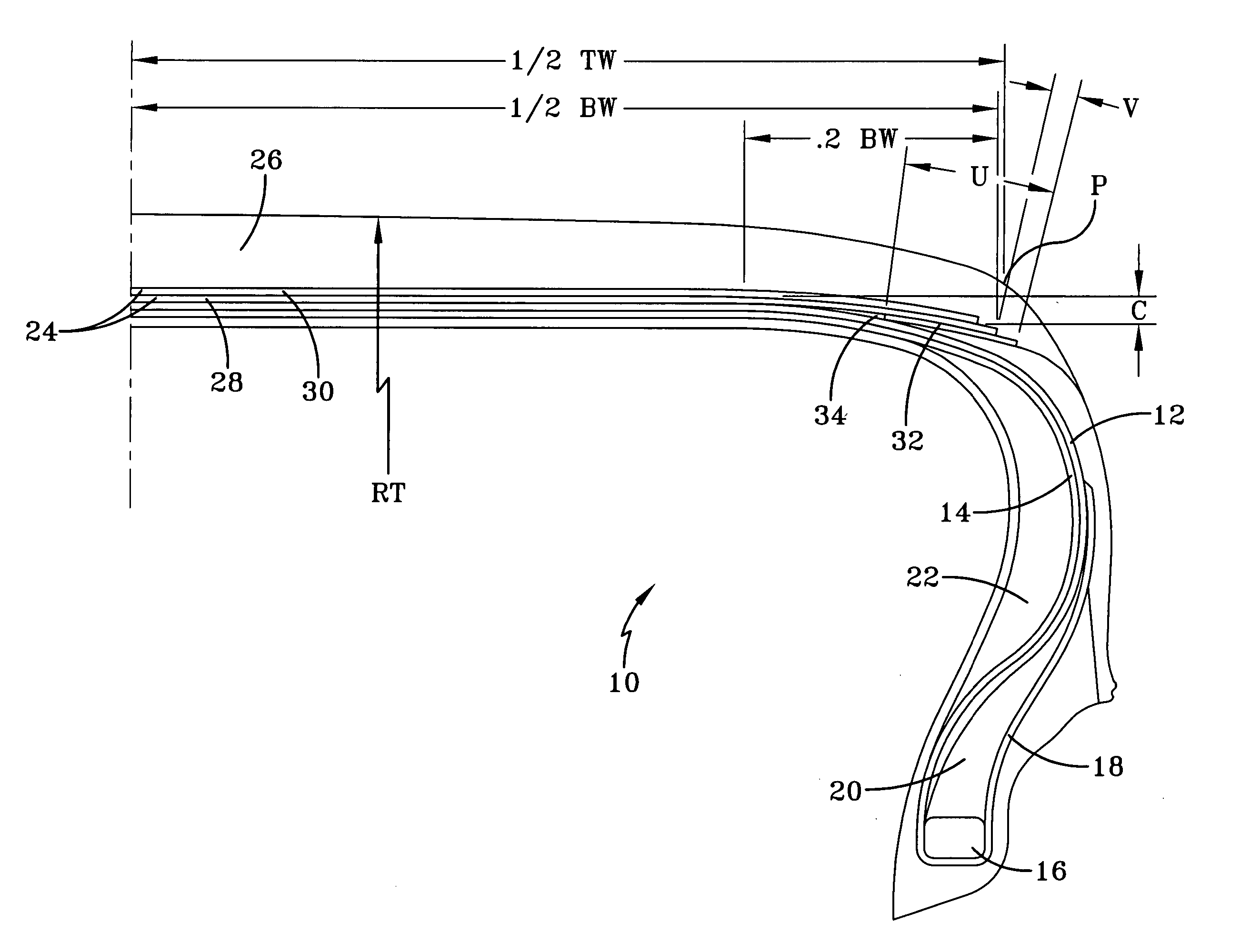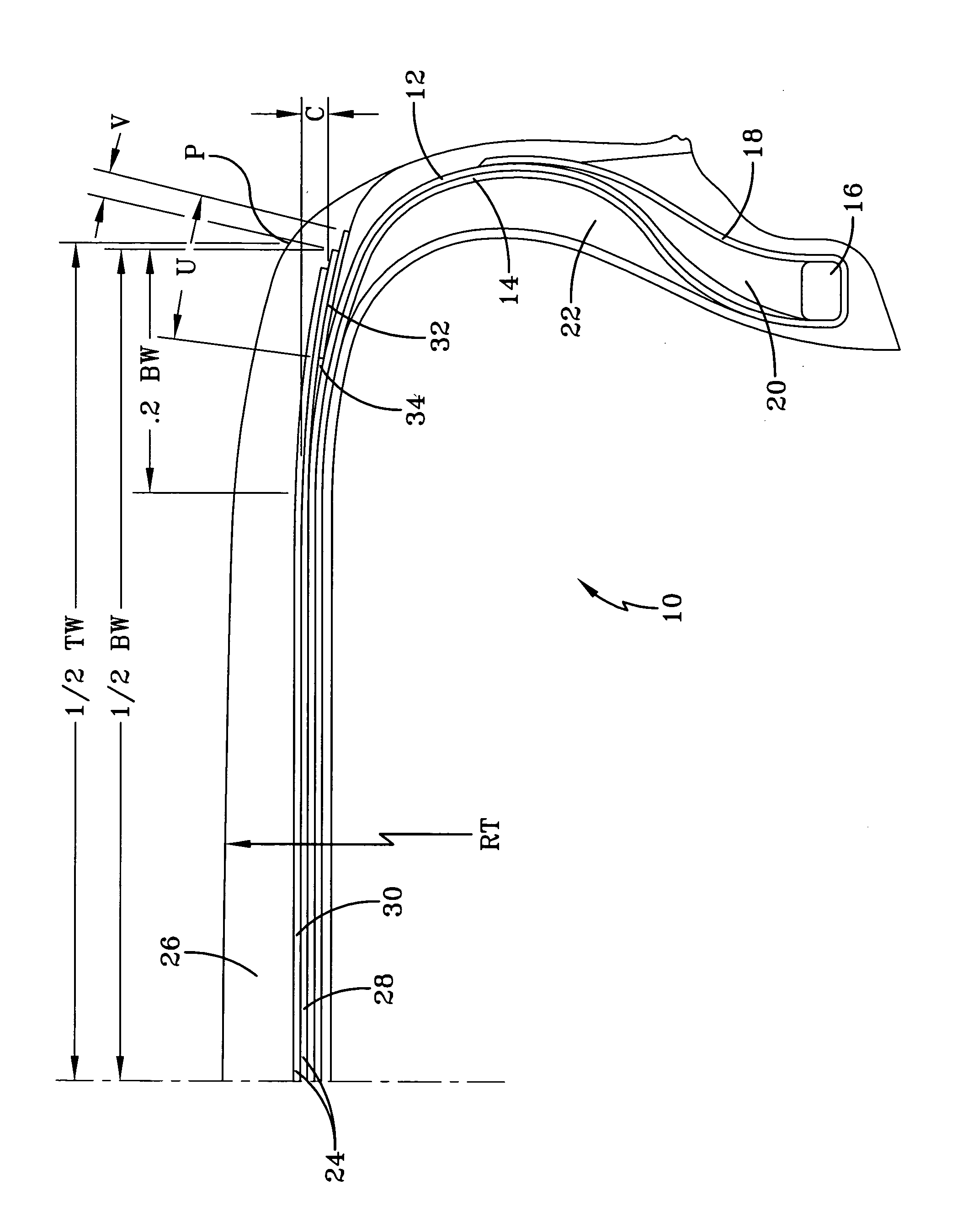Pneumatic tire
a technology of pneumatic tires and tires, applied in the field of pneumatic tires, can solve the problems of reducing the speed rating of tires, affecting the normal operation of tires, reducing the capability of tires, etc., and achieves the effects of improving the durability of tires, reducing pressure, and improving speed performan
- Summary
- Abstract
- Description
- Claims
- Application Information
AI Technical Summary
Benefits of technology
Problems solved by technology
Method used
Image
Examples
Embodiment Construction
[0037] The following language is of the best presently contemplated mode or modes of carrying out the invention. This description is made for the purpose of illustrating the general principles of the invention and should not be taken in a limiting sense. The scope of the invention is best determined by reference to the appended claims.
[0038] Based on conventional manufacturing sequences, there are two basic parts of pneumatic radial ply tires used on cars and trucks. One part is the carcass, typically assembled on a cylindrical building drum prior to expansion. The carcass includes the reinforcing plies, two inextensible annular beads, sidewalls, the innerliner, and the elastomeric material that holds those components together after the tire is assembled and the carcass is cured. The other part of the tire is the crown, which is assembled separately from the carcass and includes the tread and the underlying belts or breakers, also held together by a matrix of cured rubber. The carc...
PUM
 Login to View More
Login to View More Abstract
Description
Claims
Application Information
 Login to View More
Login to View More - R&D
- Intellectual Property
- Life Sciences
- Materials
- Tech Scout
- Unparalleled Data Quality
- Higher Quality Content
- 60% Fewer Hallucinations
Browse by: Latest US Patents, China's latest patents, Technical Efficacy Thesaurus, Application Domain, Technology Topic, Popular Technical Reports.
© 2025 PatSnap. All rights reserved.Legal|Privacy policy|Modern Slavery Act Transparency Statement|Sitemap|About US| Contact US: help@patsnap.com


